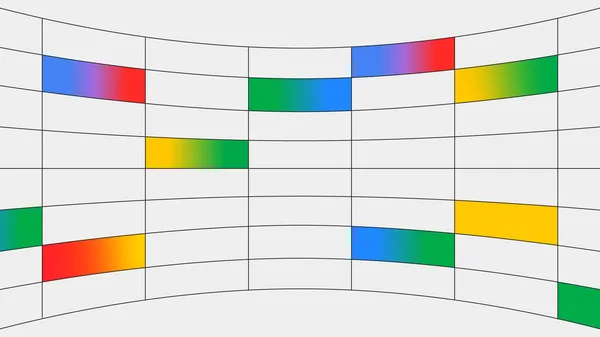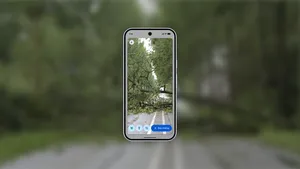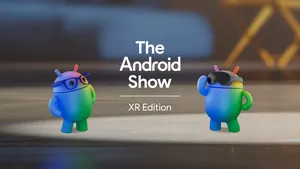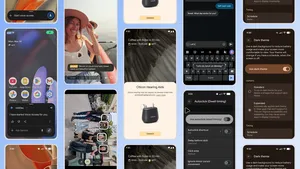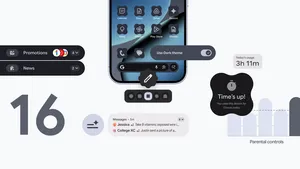10 updates coming to the Android ecosystem
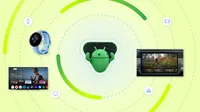
Yesterday, we shared how Android is reimagining the smartphone with AI at the core. Today, we’re introducing the second beta of Android 15 and sharing more ways we’re improving the OS to help you stay safe and get the most out of your device ecosystem.
Keep apps out of sight with private space
Coming to Android 15 this year, private space lets you create a separate space with an extra layer of authentication, keeping your sensitive apps secure and away from prying eyes. It’s like a digital safe within your phone for the apps you don’t want others to easily access or see. For example, you can hide health or banking apps in your private space to keep your personal information for your eyes only. With direct OS integration, private space offers enhanced protection for sensitive apps, isolating their data and notifications from the rest of your phone. You can also set up a separate lock for private space and hide the existence of it altogether.
Thwart phone thieves with Theft Detection Lock
Theft Detection Lock is coming later this year and helps you keep your personal and financial data safe if your phone is ever snatched from you. This powerful new feature uses Google AI to sense if someone snatches your phone from your hand and tries to run, bike or drive away with it. If a theft motion is detected, it will be quickly locked down to keep your information out of the wrong hands.
Get more real-time protection against fraud apps
Also later this year, Google Play Protect will use on-device AI to spot apps that might engage in fraud or phishing. This live threat detection will analyze how apps use sensitive permissions and interact with other apps to spot suspicious behavior in real-time. If Google Play Protect finds something that looks malicious, the app is sent to Google for additional review, and we'll warn users or disable the app if we confirm it’s conducting harmful activity. This is all done without collecting any personal data.
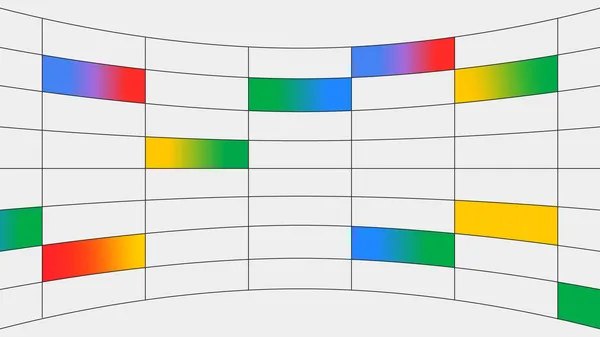
Message with RCS in Japan
Over a billion monthly active users with RCS enabled in Google Messages benefit from a more modern and secure messaging experience — with high-resolution photo and video sharing, improved group chats, end-to-end encryption and more. We’re working with KDDI and other partners to bring an updated messaging experience to Japan with RCS in Google Messages.
Add items to Google Wallet from a photo
In addition to saving digital versions of items that contain barcodes and QR codes to your Google Wallet, soon in the U.S. you can create a digital version of most passes that just contain text. Simply take a photo of everyday passes — like event tickets, library cards, auto insurance cards, gym membership cards and more — and create a digital version in your Google Wallet for quick access.
Explore AR content in Google Maps
You’ll soon be able to access augmented reality (AR) content directly in Google Maps on your phone, helping you learn more about a location in new and immersive ways. See this come to life with experiences built for places including Singapore and Paris. These AR advancements lay the foundation for the extended reality (XR) platform that we’re building in collaboration with Samsung and Qualcomm for the entire Android ecosystem.
Stay entertained with more apps in the car
Catch up on episodes of your favorite shows on Max and Peacock or play a game of Angry Birds on select cars with Google built-in — which is expanding to car models like the Acura ZDX, Ford Explorer and more. You’ll also be able to enjoy a rapidly growing selection of mobile and tablet apps in the car with our new developer program.
In addition, Google Cast (formerly Chromecast built-in) is coming to cars with Android Automotive OS, starting with Rivian in the coming months. You can easily cast video content from your phone or tablet to the car, opening up even more entertainment options.
Find new content with AI on Google TV
With over 220 million active devices 1 globally and a fast growing user base, Google TV helps you discover content faster with AI-based recommendations – so you can spend more time watching and less time searching. Now with the Gemini model, it’s even easier to pick what to watch with AI-generated descriptions on the homescreen, personalized for you based on your genre and actor preferences. AI-generated descriptions will also fill in missing or untranslated descriptions for movies and shows so you aren’t left guessing.
Improve your training with Wear OS 5 updates
With watch launches from Pixel, Samsung and more, Wear OS grew its user base by 40% in 2023 and has users in over 160 countries and regions. Now, Wear OS has expanded to more brands including OnePlus, OPPO and Xiaomi.
Later this year, battery life optimizations 2 are coming to watches with Wear OS 5. For example, running an outdoor marathon will consume up to 20% less power when compared to watches with Wear OS 4. And your fitness apps will be able to help improve your performance with the option to support more data types like ground contact time, stride length and vertical oscillation.
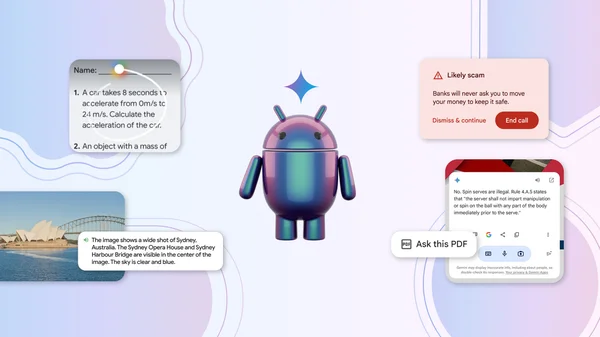
Connect your device ecosystem
Fast Pair makes it easy to connect your Android devices and accessories, like speakers, earbuds and more. Since launch, people have made over 1 billion Fast Pair connections, adding up to countless hours saved and less frustration than traditional Bluetooth pairing.
In addition, Fast Pair can also help track your accessory’s battery life and locate missing devices with the new Find My Device experience rolling out globally. Later this month, you’ll be able to find items like your keys, wallet or luggage in the Find My Device app with Bluetooth tracker tags from Chipolo and Pebblebee. Keep an eye out later this year for additional Bluetooth tags from eufy, Jio, Motorola and more.
Learn more about all our new and upcoming features on Android. And if you’re up for a challenge, play Android Game On! minigames to check out a few of these features alongside McLaren drivers Lando and Oscar.

For developers building Android apps for cars, large screens, wearables and TVs, learn about the new tools and features we announced at I/O on our Developer blog.
